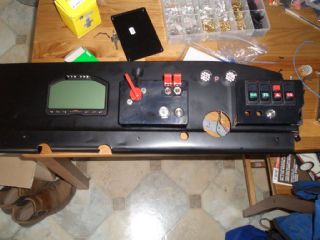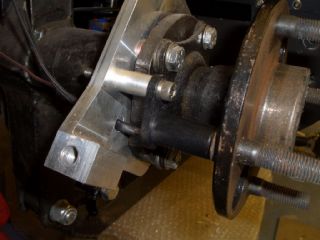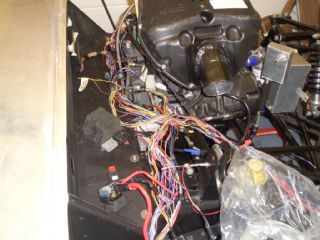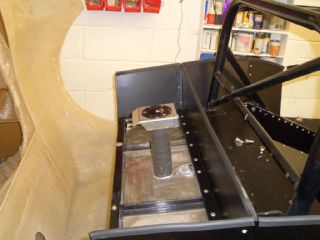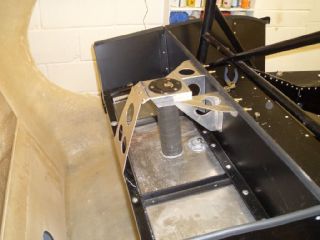 |
I've also been doing more work on the modifications to the sump pan.
Having chopped a large hole in the bottom of the sump, I've almost finished welding the extension plate on. As
you can see, I've extended the tubes for the mounting bolt and the oil/water pump drain. I'm not convinced the
latter's going to be oil-tight - I couldn't quite weld all the way round the base of the extension tube as there
wasn't enough space to get the TIG torch in there - but I can always sleeve it if not.
I've mounted the sump onto a 6mm thick piece of steel before starting the welding. Although the sump's a reasonably
thick piece of casting, my TIG welding 'technique' on ali still involves pumping a vast amount of heat into the
workpiece, and I didn't want it to warp. The welds are a bit rough, but they should be plenty strong enough and
with a bit of luck they'll even be oil-tight too. Naturally, I'll make sure the sump's water-tight before I fit
it.
You can also see the boss I've welded on the side of the extension - the standard sump plug (right on the corner
of the sump closest to the camera) is a bit useless on the modified sump.
Once I've finished the sump, I've just got to work out a way of extending the oil pick-up down by an inch and a
bit. Which will be a bit of a swine, I suspect, as I've now remembered the pick-up pipe is plastic, and even with
TIG I can't weld plastic... |
